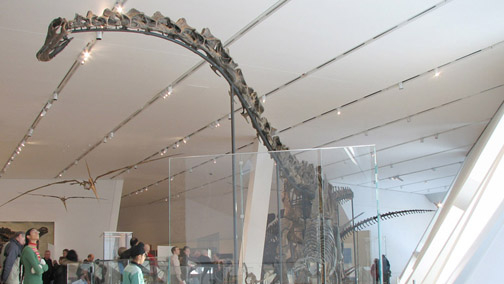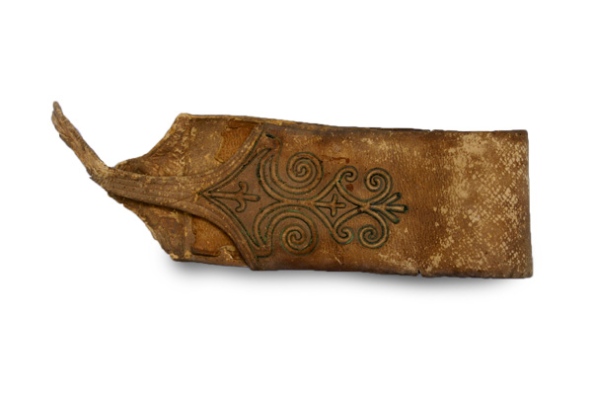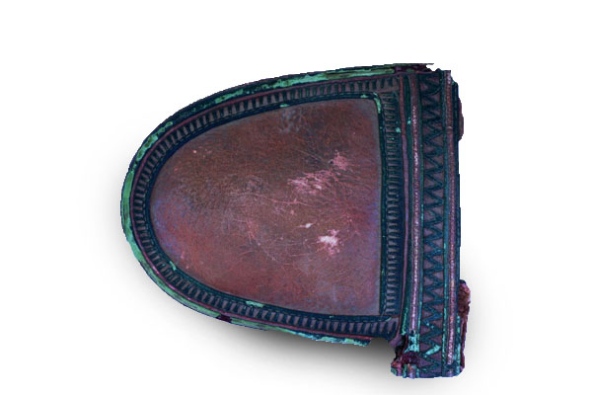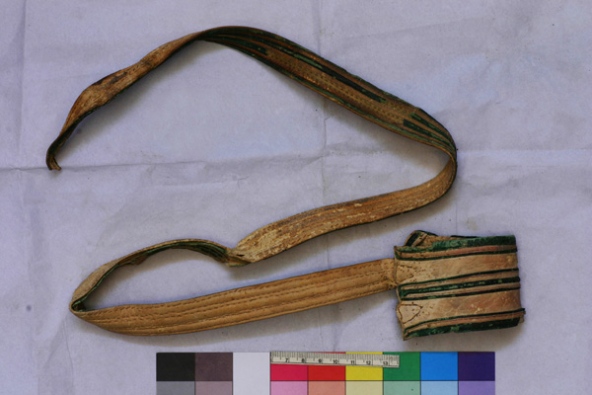BY: CHRISTOPHER WAI
 |
| Dr. Henry Jones Jr. and Curator Marcus Brody, Source: Raiders of the Lost Ark (1981) |
On Marcus Brody, "Curator of the National Museum"
“'He's got a two day head start on you, which is more than he needs. Brody's got friends in every town and village from here to the Sudan, he speaks a dozen languages, knows every local custom, he'll blend in, disappear, you'll never see him again. With any luck, he's got the grail already.'
[LATER]
'But you said he had a two day head start. That he would blend in, disappear.'
'Are you kidding? I made all that up. You know Marcus. He once got lost in his own museum.'”
Indiana Jones and the Last Crusade (1989)
What museums, archives or universities hold in their modest, grand or frequently cramped quarters is often a mystery. To the public there is the allure and frustration of only being able to see a portion of the museums entire collection at any one time.
But this holds true for professionals too. After all, there are many museums out there and many collections and for all the catalogues available online for the British Museum or the Met, there are many that simply don’t have the resources for it.
Sometimes an artifact gets misfiled or lost in the maze. Maybe the handwriting is just too illegible. Documentation gets lost. People retire and the accumulation of decades of knowledge isn’t passed down. Contracts end and turnovers with seasonal staffing can lead to inconsistencies. Subject expertise and proper conservation is also not always available. Values and priorities change. Perhaps they were even acquired by questionable means many decades ago. Perhaps a war or disaster meant a hasty transfer of collections.
The allure of new discoveries is important, but for all that and the romanticism attached, there is a lot to be said about the assemblage we already have.
Here are five notable ones:
1. Ramesses I in Niagara Falls- Niagara Falls Museum and Dare Devil Hall of Fame (1827-1999)
 |
| Statue Head of Paramessu (Ramesses I), Boston Museum of Fine Arts Source. |
This mummy then became one amongst a number of other mummies as curio attractions that at one point in the mid to late 1990s was advertised as being a part of “Over 700 000 Authentic Artifacts”. Said "artifacts" included a two headed calf, and a “Japanese Warrior" (in the Gallery G's “Oriental Curios”).
.jpg) |
| Reminder: this is from the mid to late 1990s... Source |
When the museum closed in 1999 after a few relocations of the museum and at least one involving a dump truck, it was acquired by the Michael C. Carlos Museum at Emory University.
Based on X-rays, and CT scans and comparisons with other New Kingdom burial practices and resemblances to Seti I and Ramesses the II, it's strongly suggested that this was mummy was most likely Ramesses I.
In 2003, 143 years since he was bought by the Niagara Falls Museum and even longer since it's possible looting from a group of royal mummies at Deir el-Baihri, Ramesses I was returned to Egypt.
2. Fritz Lang and Thea von Harbou's’s Metropolis (1927)- Museo del Cine
Based on X-rays, and CT scans and comparisons with other New Kingdom burial practices and resemblances to Seti I and Ramesses the II, it's strongly suggested that this was mummy was most likely Ramesses I.
.gif) |
| Reconstruction of Ramesses I Source: Emory University |
2. Fritz Lang and Thea von Harbou's’s Metropolis (1927)- Museo del Cine
 |
| Metropolis (1927) |
Metropolis is a major piece of film history that still affects our culture today (i.e. music, movies, fashion, etc.), most notably, in the popular consciousness through Star Wars' C3PO and a fair number of its themes in subtle ways.
 |
| C3PO Source |
 |
| Left: Lady Gaga. Right: Metropolis Source |
Thematically, it covers a lot of the core elements of science fiction and dystopian fiction, from the dominance of corporations, socioeconomic inequality, messianic themes, robots posing as people and giant cityscapes with aircraft flying through.
It says a lot about this film when a near complete print of the original film was only reconstructed in 2010. Reconstructions have been attempted through the decades, but in 2008, the longest single print was found in the Museo del Cine in Buenos Aires.
3. Skeleton from Ur- Penn Museum
In 1929, Leonard Woolley's excavation team at Ur discovered a set of 48 Ubaid period graves but recovered only one of them from this specific level. The body was preserved relatively intact by block-lifting it: the body and part of the surrounding soil was coated in wax before being removed as a single piece from the ground.
Along with the other finds at Ur, the collection was divided between Iraq, Philadelphia and London.
In 2014, during the Penn Museum's effort to digitize its collection, William Hafford found that one of two skeletons brought to Philadelphia were missing.
3. Skeleton from Ur- Penn Museum
 |
| Source: Penn Museum |
Along with the other finds at Ur, the collection was divided between Iraq, Philadelphia and London.
In 2014, during the Penn Museum's effort to digitize its collection, William Hafford found that one of two skeletons brought to Philadelphia were missing.
 |
| Penn Museum records. Source |
Thankfully, the curator, Janet Monge, remembered that there was an undocumented skeleton in a box at the museum and managed to match it with Woolley's description. Despite Ur and Woolley's reputation, even the most famous site can risk losing parts of the collection if they are blindsided by the more well known finds.
4. Gordo The Barosaurus- Royal Ontario Museum
If you've ever walked through the dinosaur galleries in the Michael Lee-Chin Crystal galleries then you've probably already met Gordo, even if you didn't realize it. But that seems to be its lot in life.
Found a little over a century ago in Utah amongst a number of other rare Barosaurus specimens, Gordo was transferred to the ROM in 1962 from the Carnegie Museum of Natural History.. During this time, it was misclassified as a different dinosaur, a Diplodocus.
In 2007, curator David Evans set off to add a sauropod specimen to the revamped Crystal gallery and it was only in Wyoming when he found a reference to Gordo from paleontologist Jack McIntosh that correctly identified it as a Barosaurus.
And at last, after 45 years and 8 weeks of reconstruction work, Gordo was finally on display at the ROM.
5. Leather Chariot Trappings –Cairo Museum
Organics don’t generally survive very well, especially after a few thousand years without careful conservation, but miracles do happen.
In 2007, Dutch archaeologist Andre Veldmeijer came a cross a set images of surviving chariot trappings in a 1957 text during his research into ancient leatherwork, but initially came up empty when he asked the Egyptian Museum about them. Thankfully. Ibrahim El Gawad, the curator of the Egyptian Museum managed to find the set in the back room drawers of the museum by accident.
4. Gordo The Barosaurus- Royal Ontario Museum
 |
| Gordo. Source: ROM |
Found a little over a century ago in Utah amongst a number of other rare Barosaurus specimens, Gordo was transferred to the ROM in 1962 from the Carnegie Museum of Natural History.. During this time, it was misclassified as a different dinosaur, a Diplodocus.
In 2007, curator David Evans set off to add a sauropod specimen to the revamped Crystal gallery and it was only in Wyoming when he found a reference to Gordo from paleontologist Jack McIntosh that correctly identified it as a Barosaurus.
And at last, after 45 years and 8 weeks of reconstruction work, Gordo was finally on display at the ROM.
5. Leather Chariot Trappings –Cairo Museum
Organics don’t generally survive very well, especially after a few thousand years without careful conservation, but miracles do happen.
 |
| Hip Strap: Source |
 |
| Bottom of a quiver. Source |
They have since been the subject of a research study on Egyptian chariots in collaboration with Egyptologist Salima Ikram.
 |
| Horse Harness. Source |
Unfortunately, there is another problem. While the “provenance” (the history of ownership) goes back to a 1932 transaction from a Greek dealer by the name of Georges Tanos, the archaeological “provenience” (with the “i”) is unknown. Its relationship with a site, region, and associated objects or burials are all still severed.
 |
| Gauntlet. Source |
In 2012, the First International Chariot Conference was held in Cairo.
To be continued…


No comments:
Post a Comment
Note: only a member of this blog may post a comment.